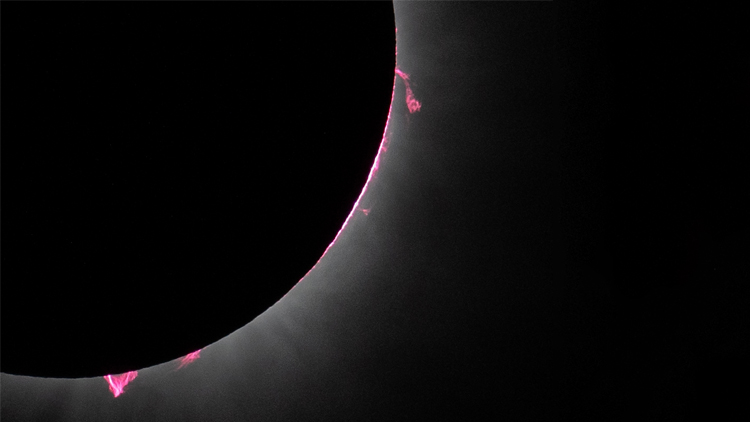
On April 8, 2024 many North Americans experienced a once-in-a-lifetime phenomenon—a total solar eclipse. A total eclipse is a rare event—they happen in the same location about once every 375 years. The Sun’s activity and location in its orbit around Earth made this eclipse even more spectacular than most.
A solar eclipse happens when the Moon passes between Earth and the Sun. The Moon blocks the Sun and casts a shadow onto Earth’s surface. The shadow that the Moon casts on Earth has two parts: the umbra and the penumbra. In the umbra, sunlight is completely blocked. This area experiences totality, or a total solar eclipse. In the penumbra, sunlight is only partially blocked.
As the Moon orbited Earth on April 8, different parts of North America experienced totality. The 115-mile-wide path began on Mexico’s Pacific coast and moved northeast, crossing parts of 13 U.S. states including Texas, Arkansas, Indiana, Ohio, New York, and Maine. Those in the path of totality experienced minutes of darkness in the middle of the day as the Moon passed in front of the Sun.
During totality, it was also possible to view the Sun’s corona [the Sun’s atmosphere] around the Moon, and it put on a show! This eclipse offered a rare opportunity to observe the corona in a very active state. The Sun was at the peak of its 11-year activity cycle.

Look closely to see the gasses from the Sun’s active corona.
The Moon was also relatively close to Earth during this eclipse. This made the Moon appear larger and the eclipse last longer than that last eclipse that occurred in North America.
If you were able to observe the 2024 total eclipse, consider yourself very lucky. The path of totality covered only 0.52% of the globe. The next major eclipse in North America is 20 years away and it will follow a different path.
What Do You Think? Were you in the path of totality during the 2024 solar eclipse? How do you know?
Photo Credit: (t)Aubrey Gemignani/NASA, (b)Keegan Barber/NASA



